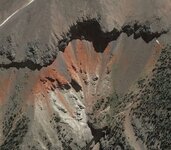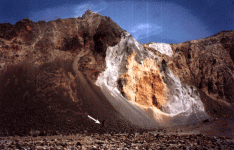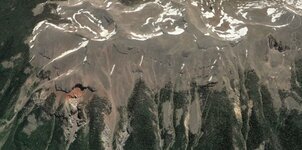UncleMatt
Bronze Member
- Jul 14, 2012
- 2,389
- 2,531
- Detector(s) used
- Garrett Infinium & Gold Bug II, Bazooka Super Prospector Sluice
- Primary Interest:
- All Treasure Hunting
Hi All,
Take a look at the attached photo. I am curious what you all think about the gossans in the photo, and whether or not they are deserving of prospecting. I do not have much experience with exploiting gossans, and look forward to hearing your opinions. This is in a very remote area, and is very hard to get to, so I was thinking about about perhaps panning the drainage plume from this area to see if it showed any colors.

Take a look at the attached photo. I am curious what you all think about the gossans in the photo, and whether or not they are deserving of prospecting. I do not have much experience with exploiting gossans, and look forward to hearing your opinions. This is in a very remote area, and is very hard to get to, so I was thinking about about perhaps panning the drainage plume from this area to see if it showed any colors.











